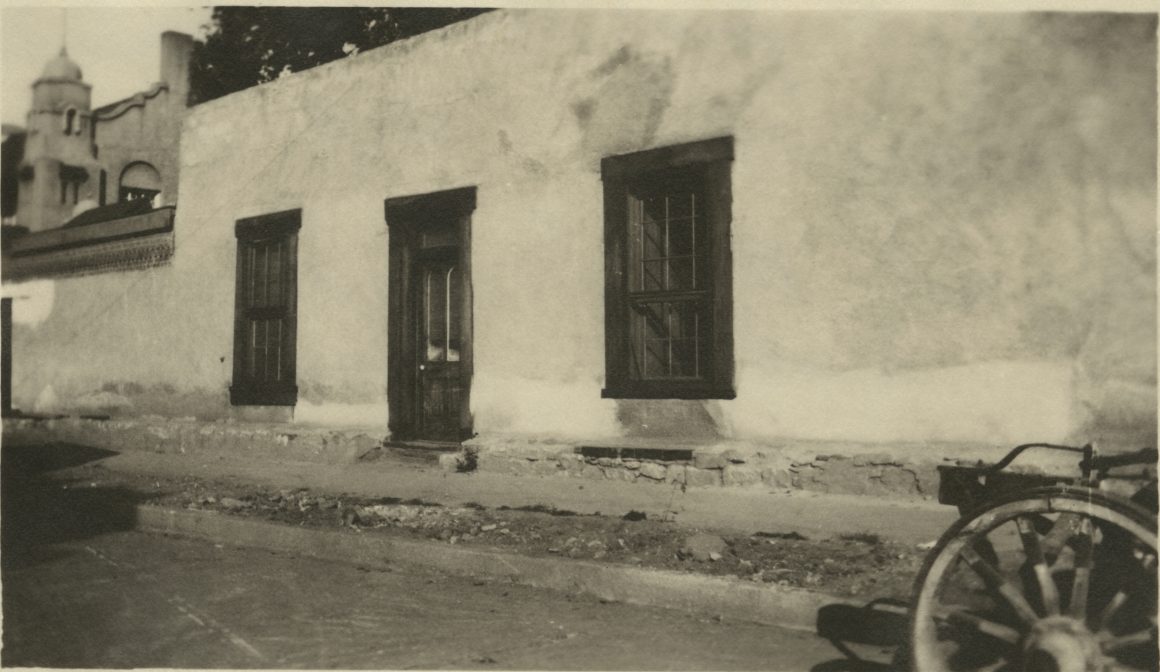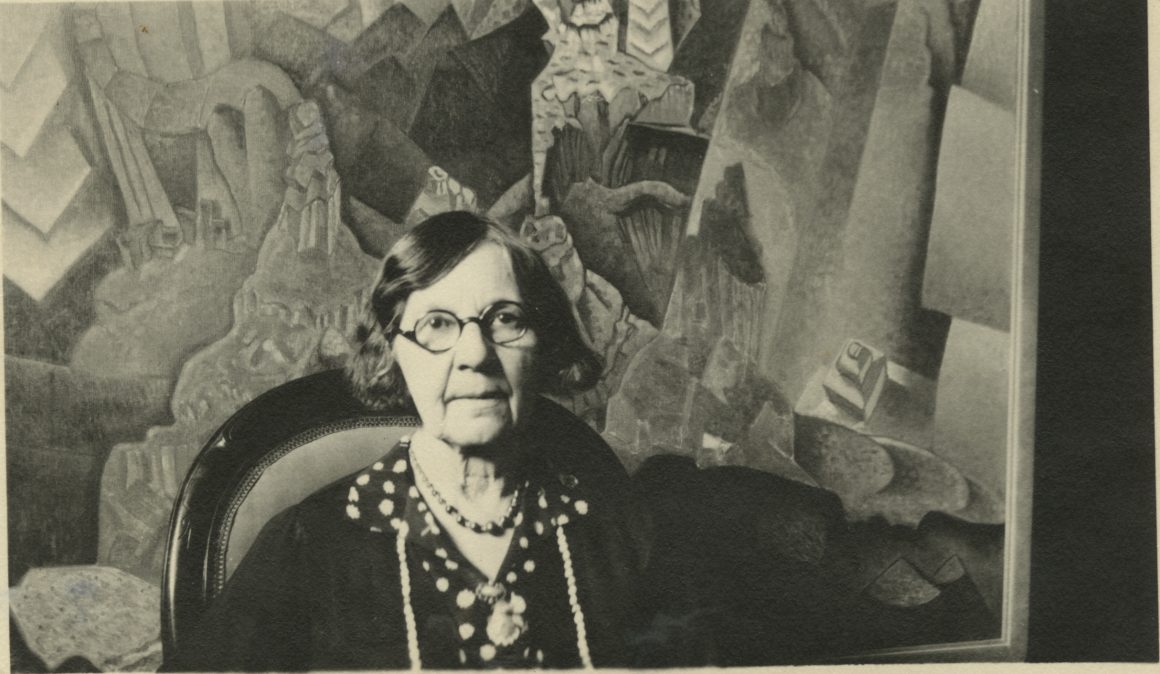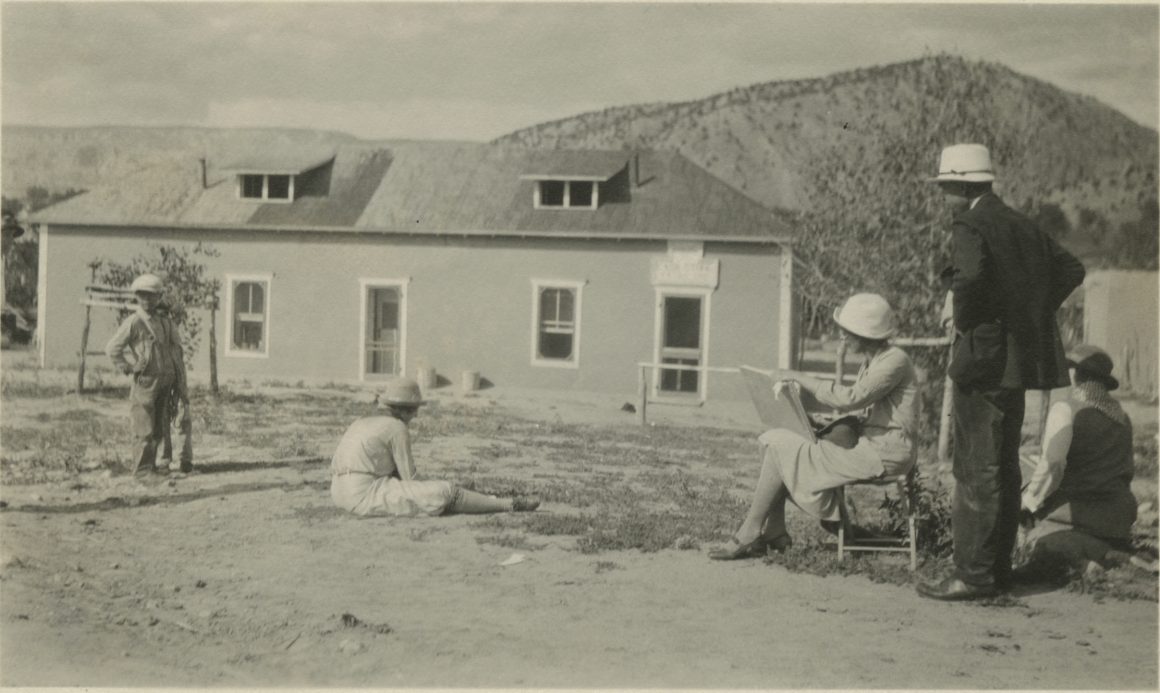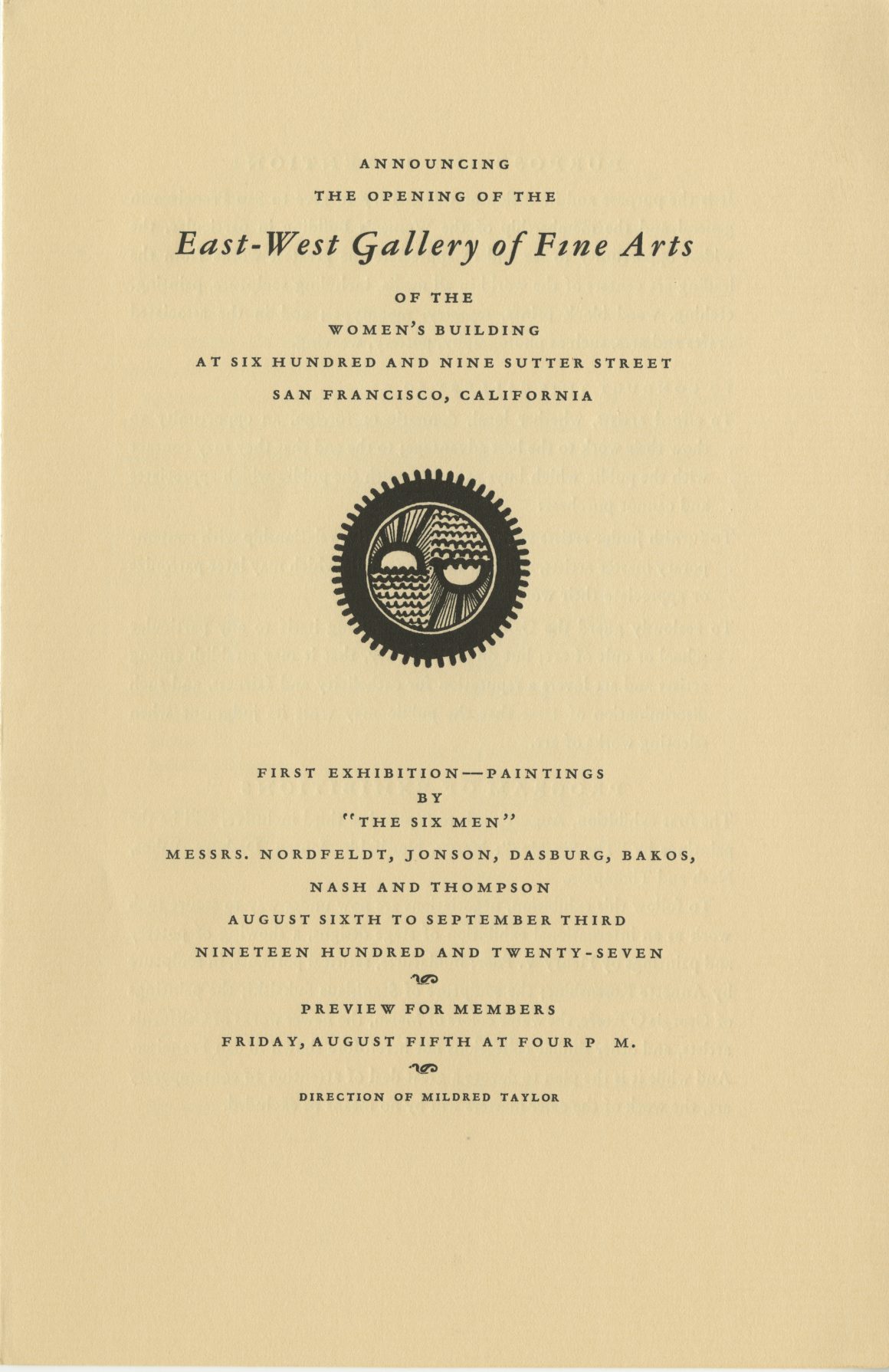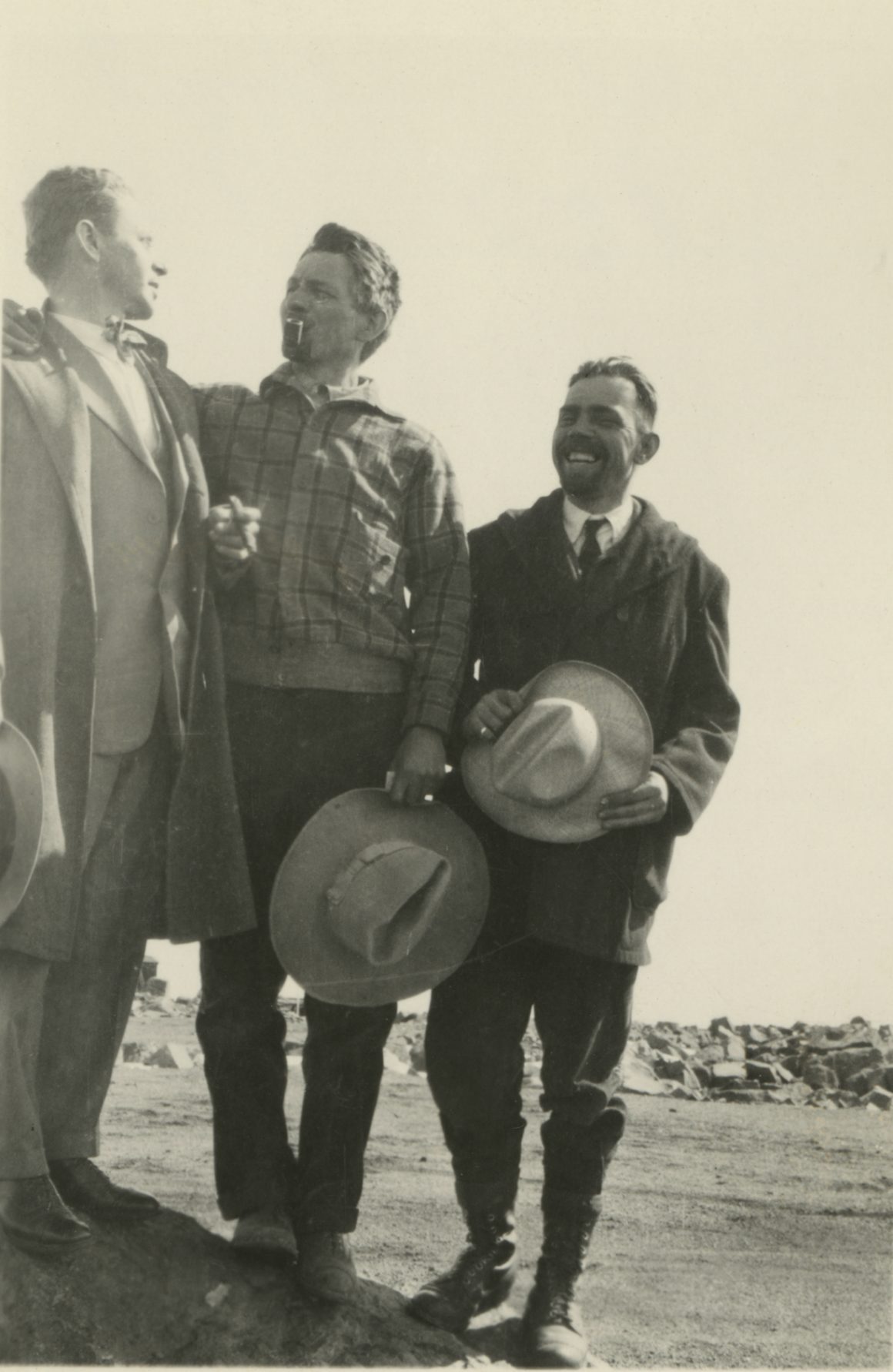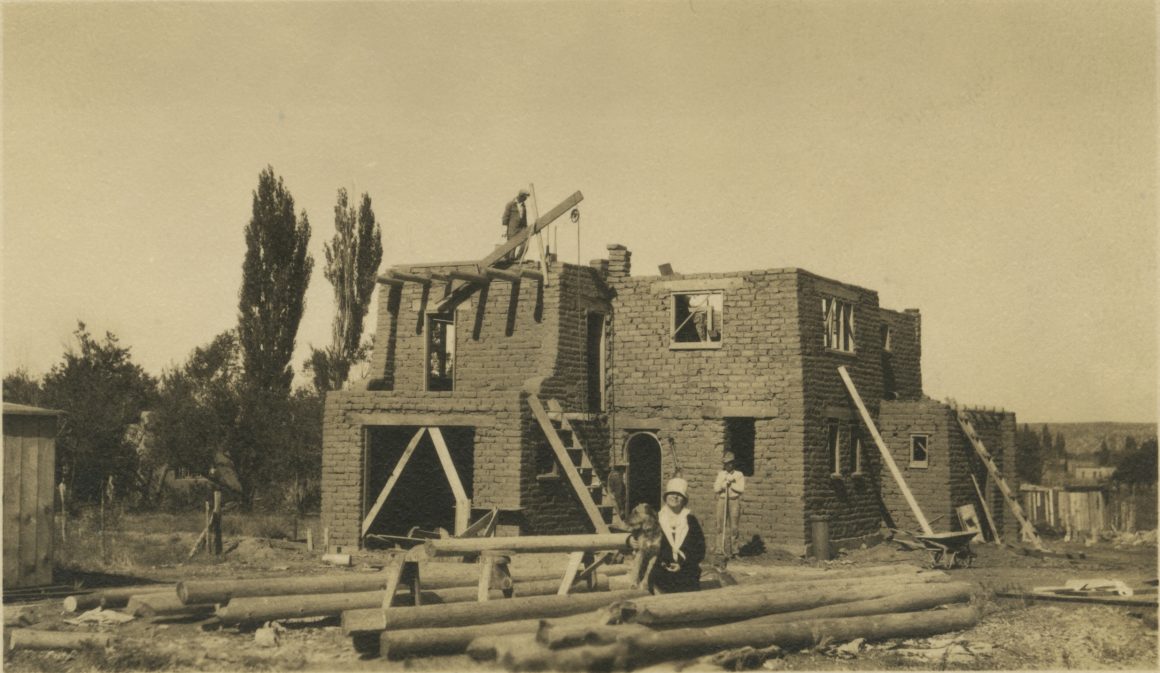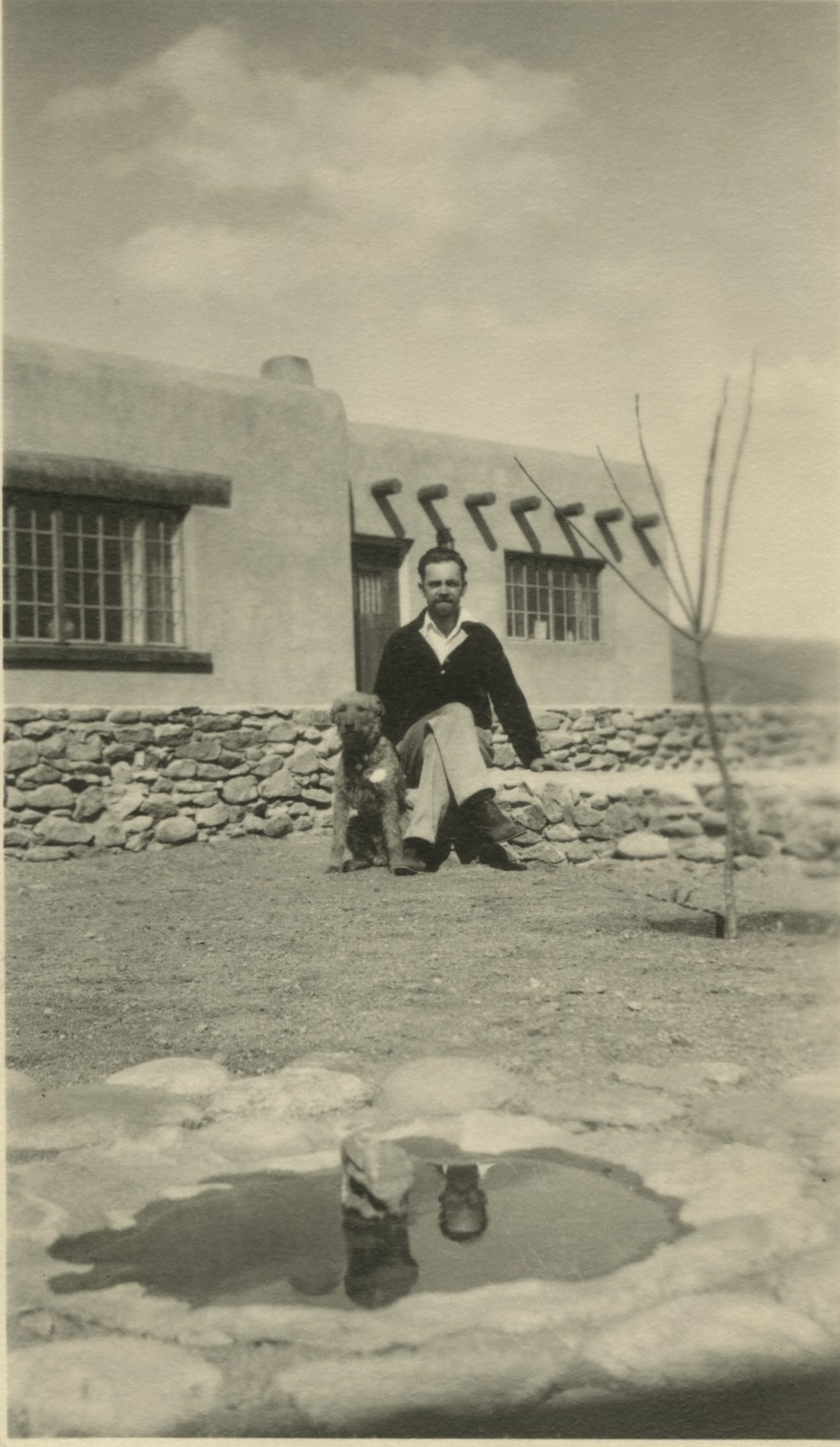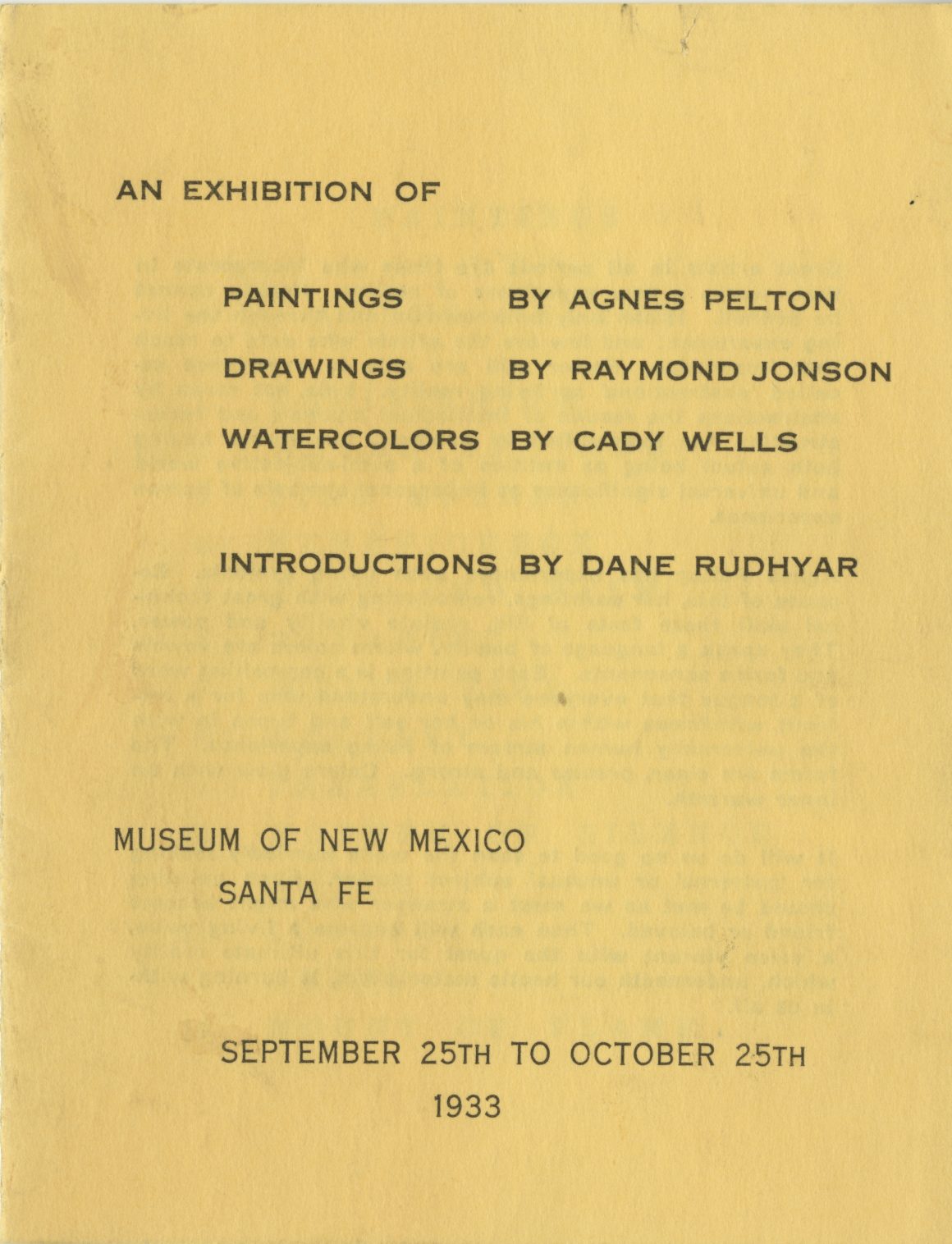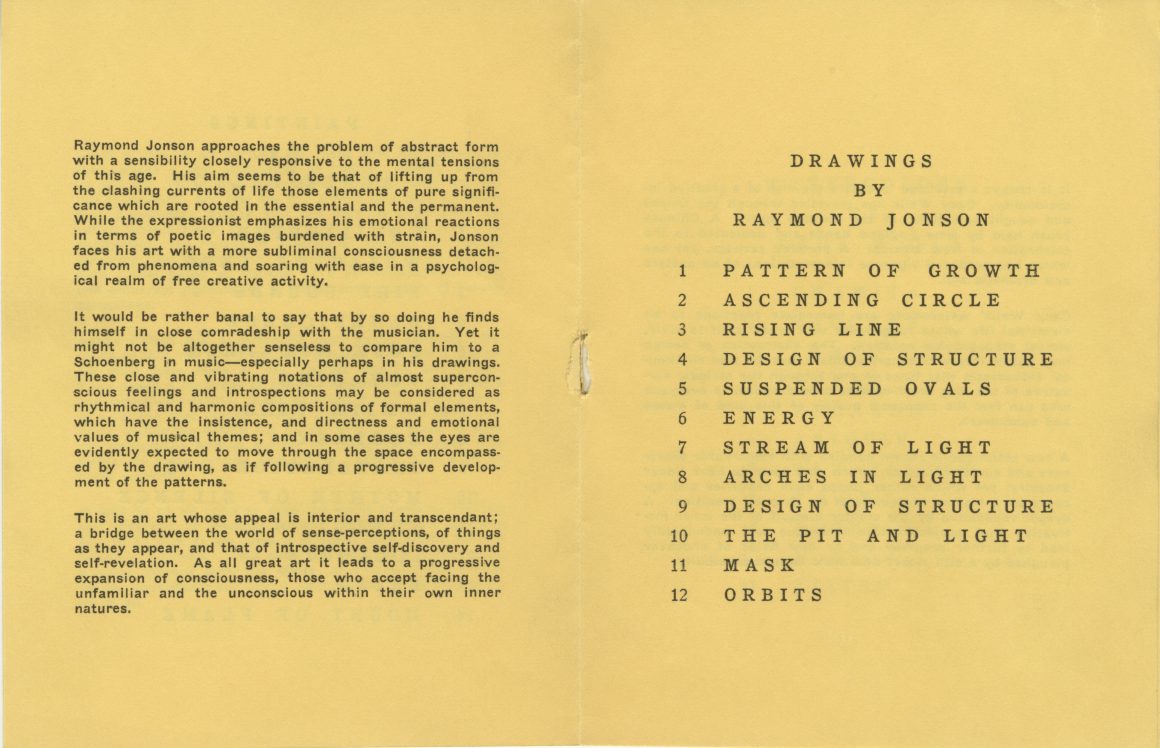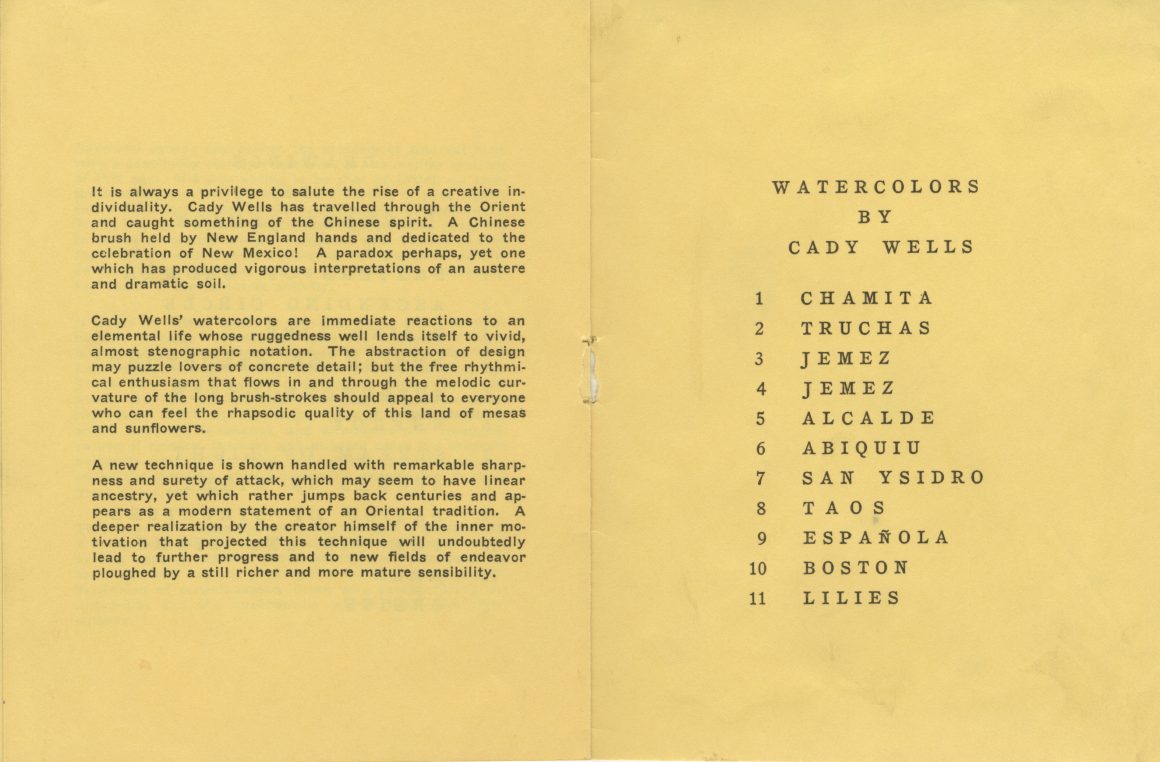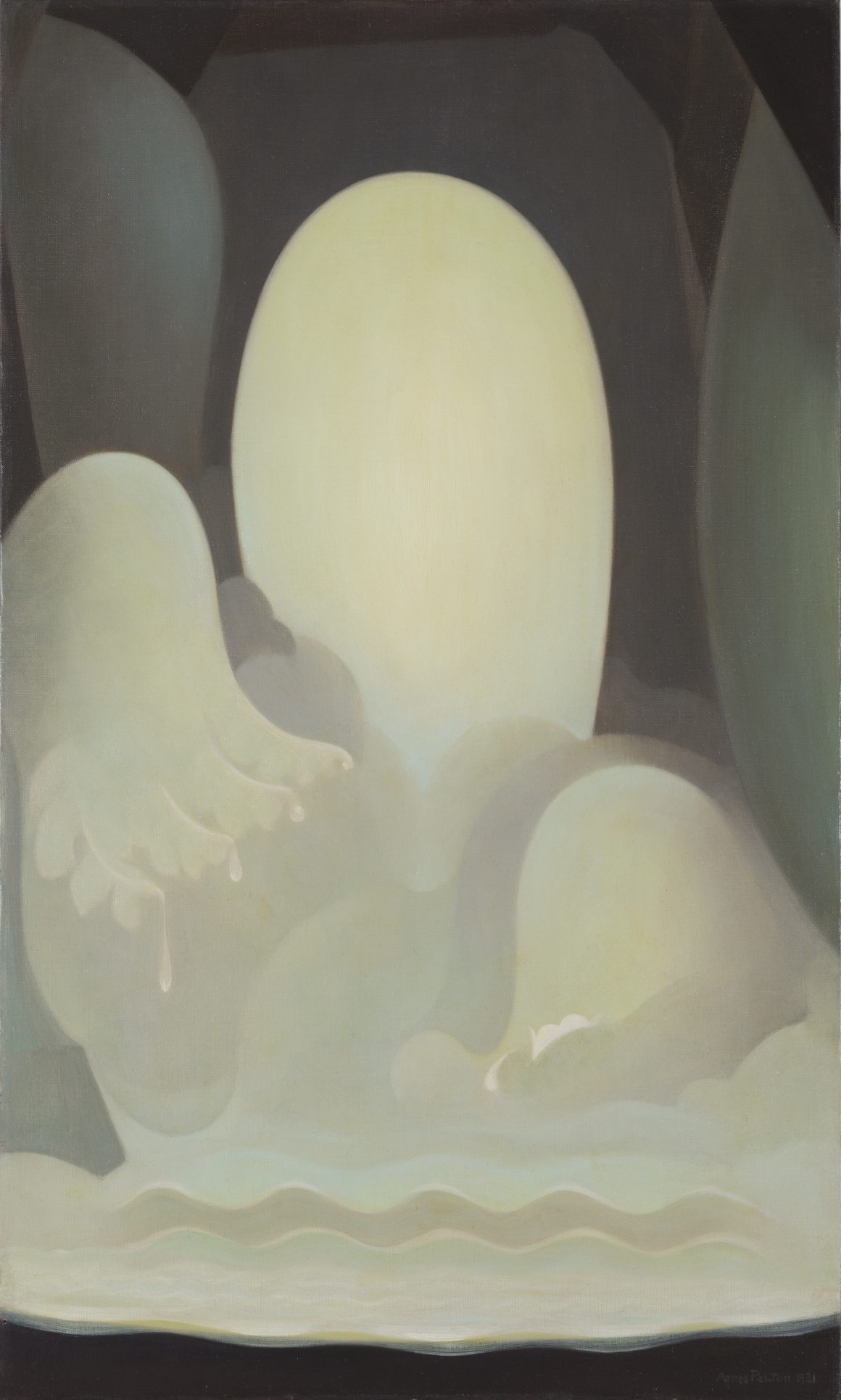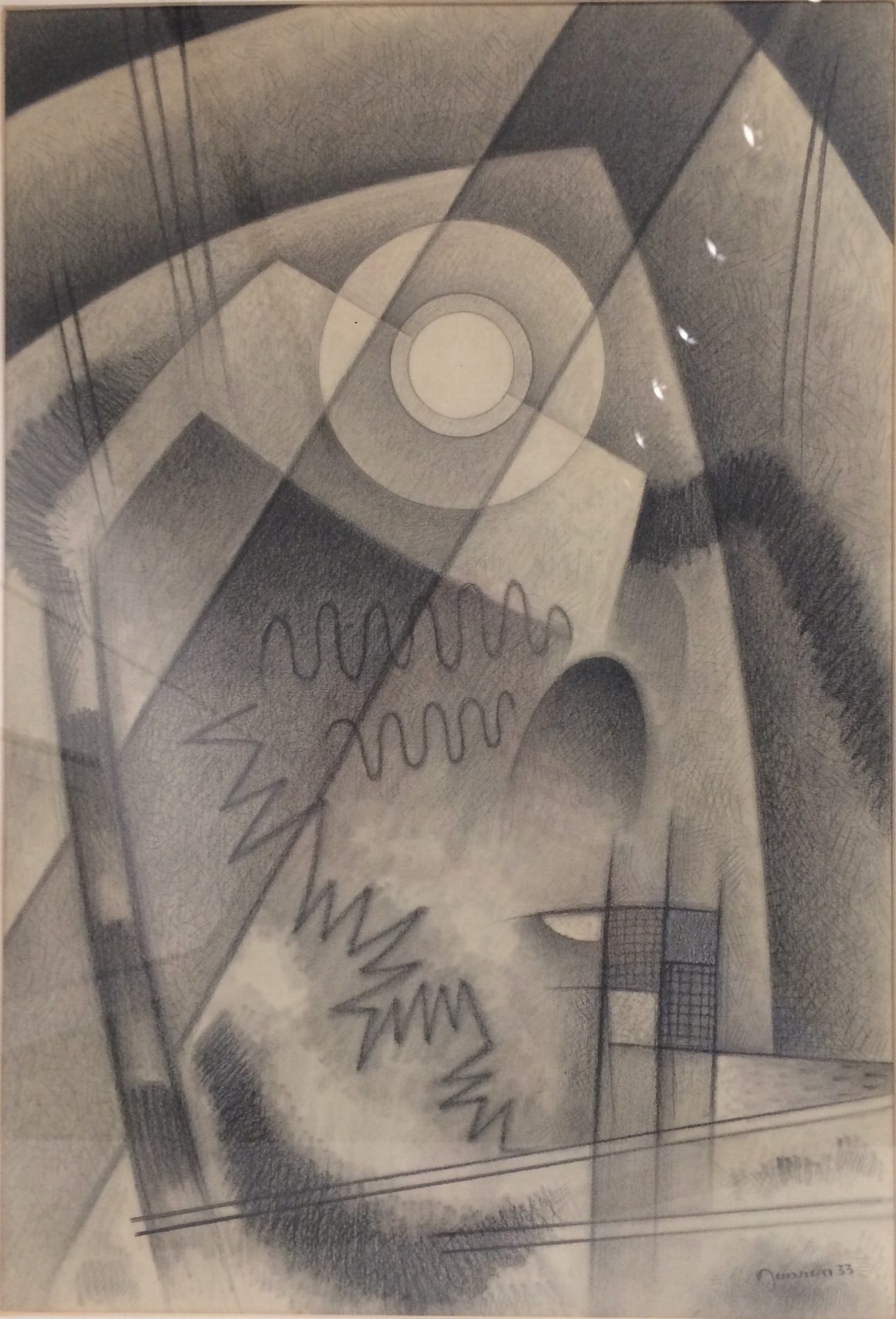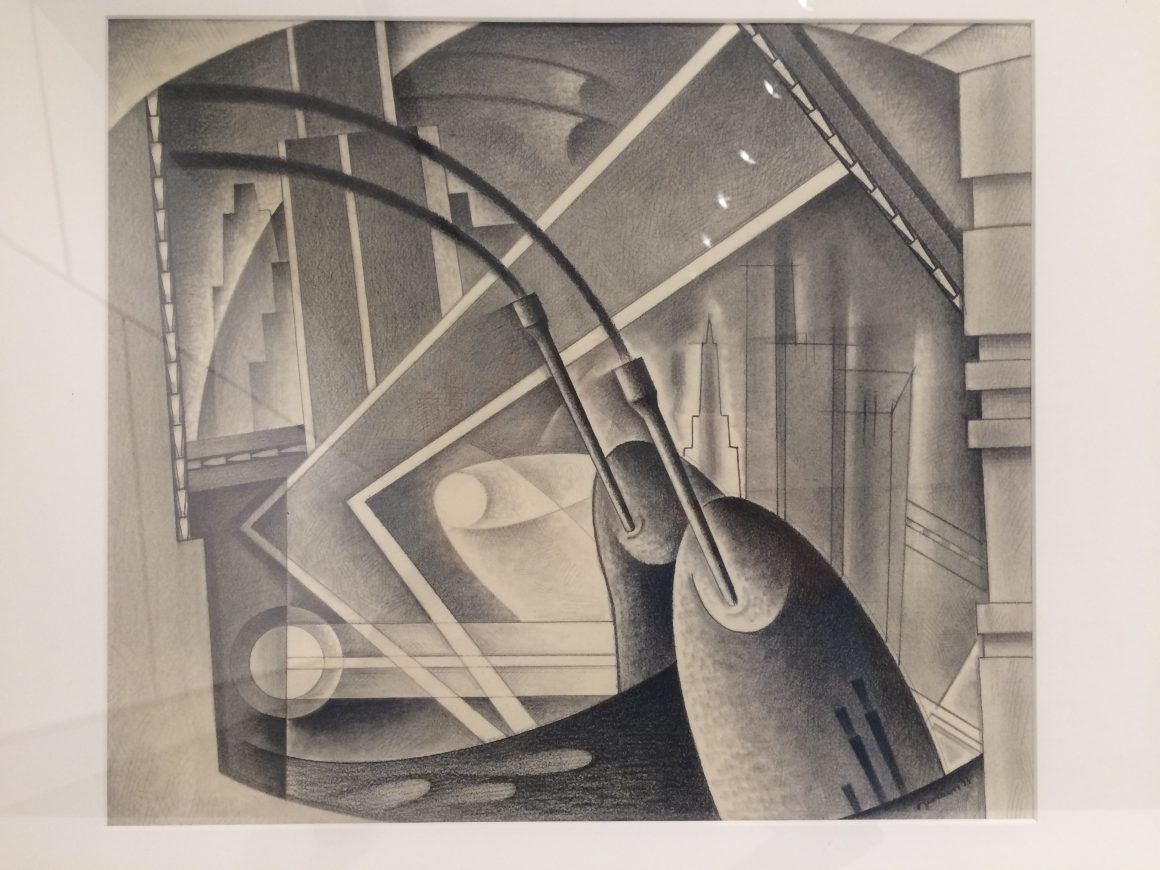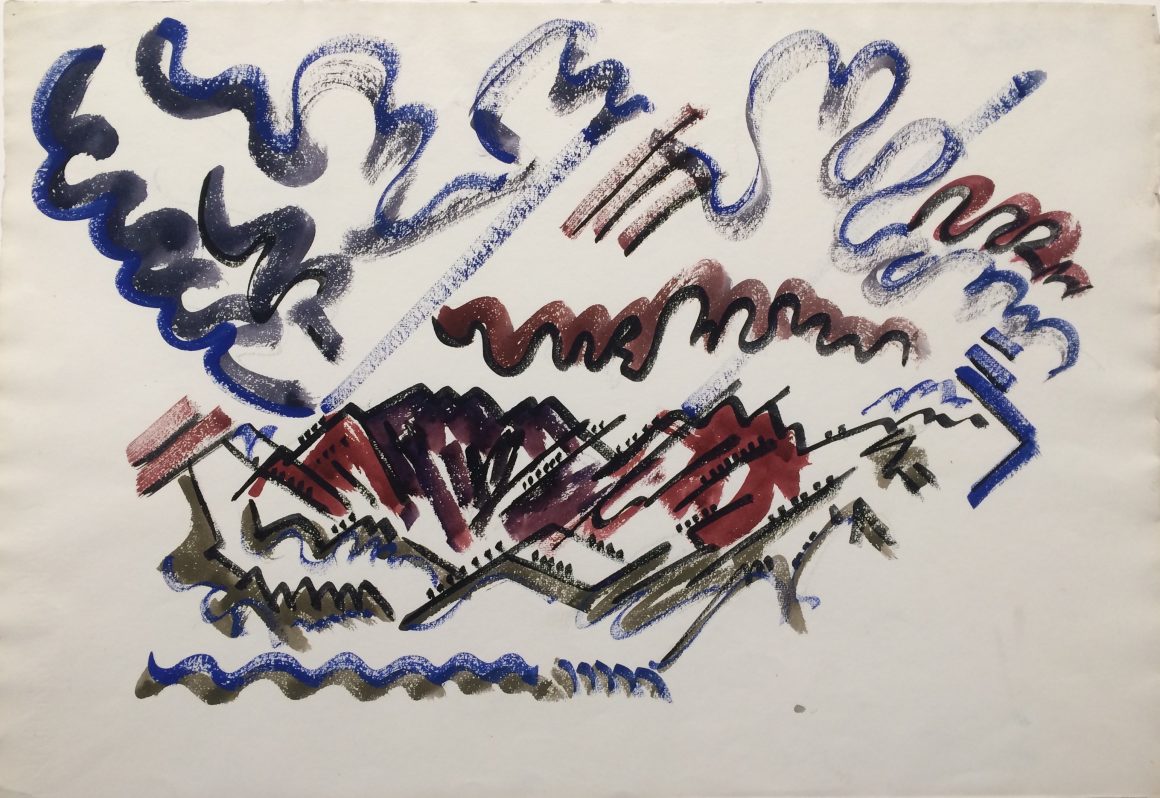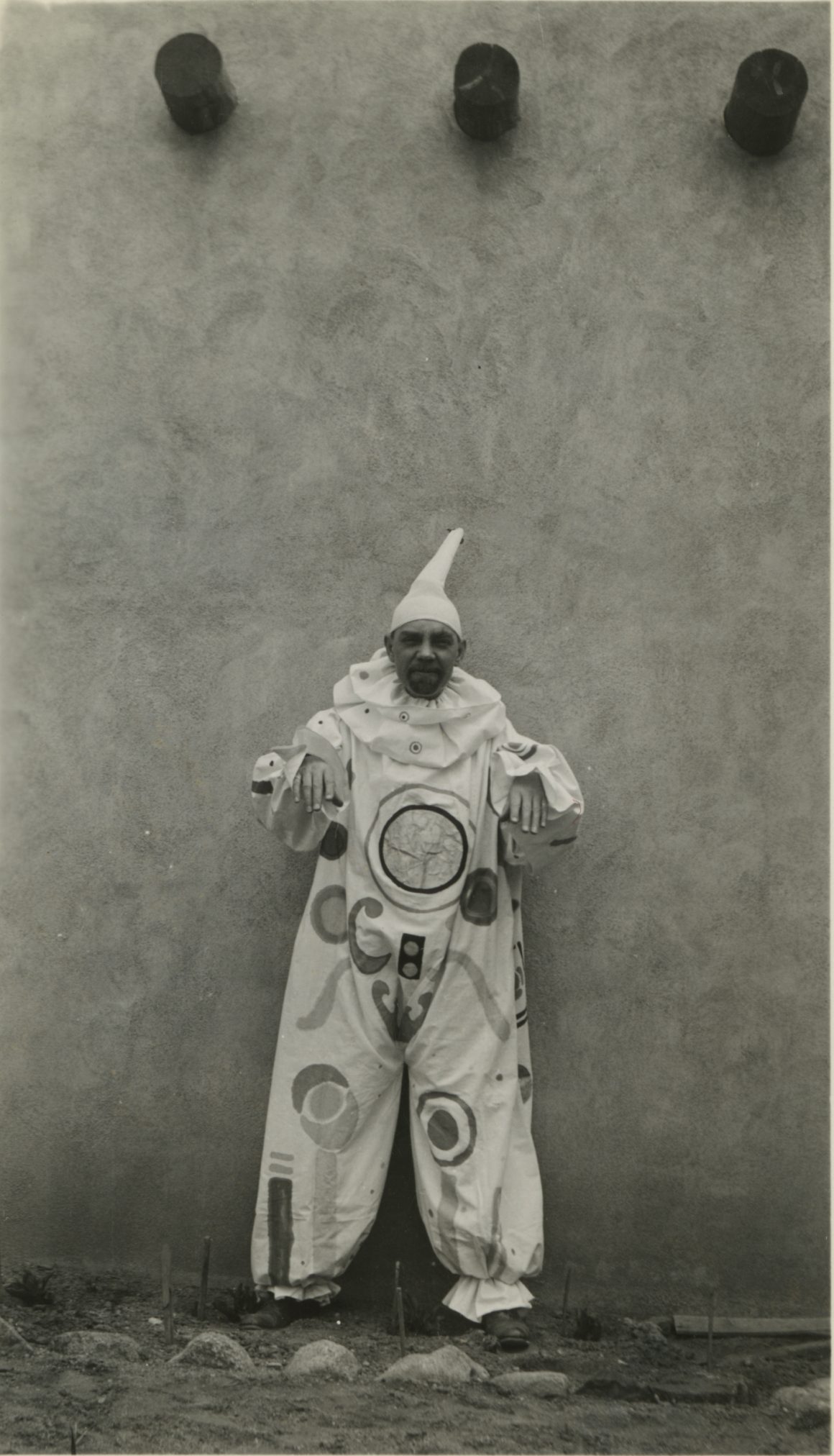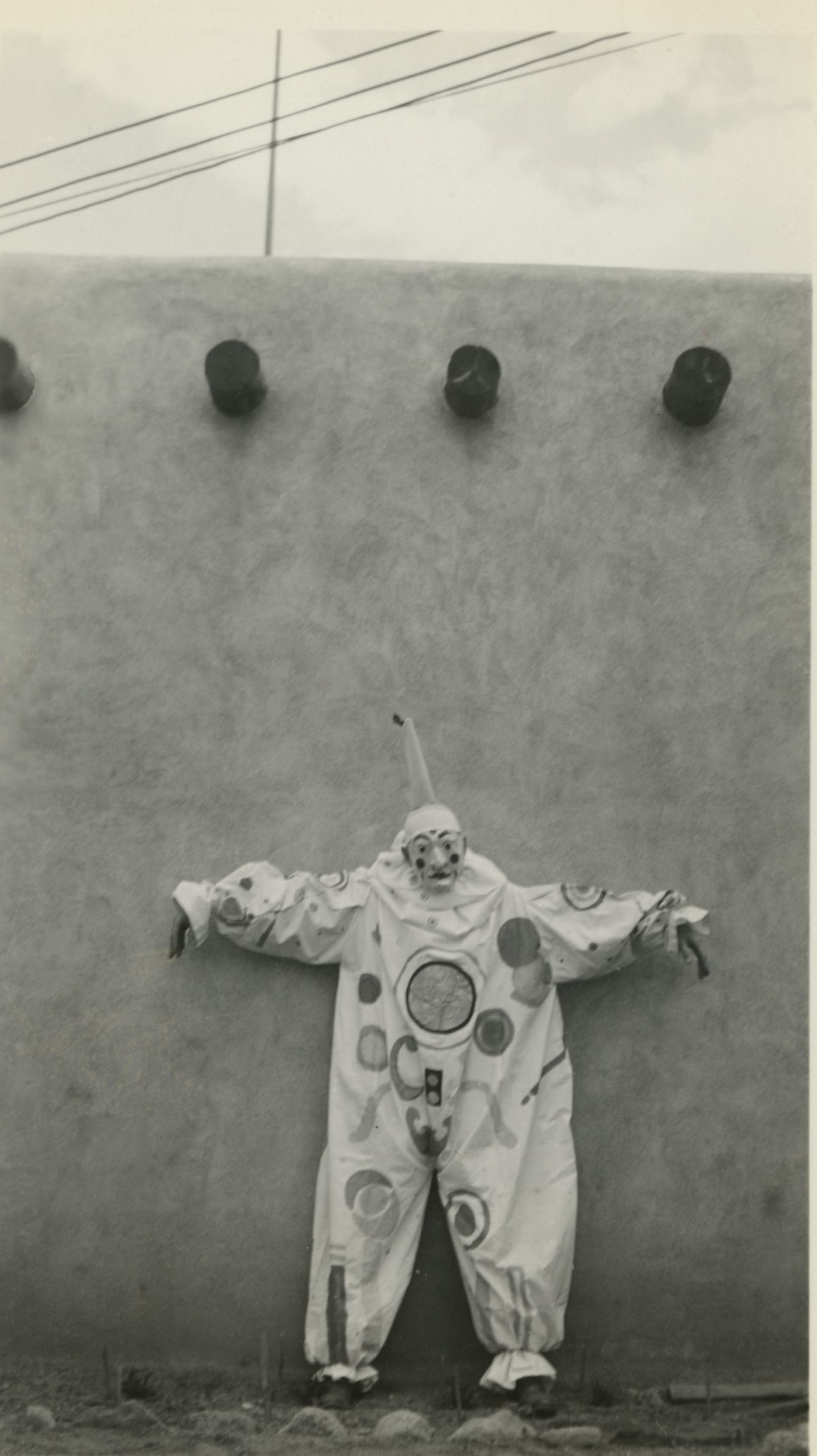Santa Fe, 1922–1950
Introduction
After spending time in Northern New Mexico on several previous painting trips to the Southwest, Raymond and Vera Jonson move to Santa Fe in 1924. He established the Atalaya School to teach art classes and continued painting in both figurative and increasingly non-objective styles. In 1927, along with Andrew Dasburg, B.J.O. Nordfeldt, Joseph G. Bakos, Willard Nash, and John E. Thompson, Jonson joined the Santa Fe “Six Men Group,” artists who regularly exhibited at the Museum of New Mexico as well as other institutions throughout the West. In 1925, Jonson’s painting Light was purchased by John Curtis Wood and added to the permanent collection of the New Mexico Museum of Art. During the 1930s, Jonson also had solo exhibitions in New York and Chicago and completed his masterpiece six-panel painting Cycles of Science for the Public Works Art Project.*
Jonson’s prolific paintings of this period transitioned toward a more modern aesthetic and were inspired by the landscape and colors of the region. He began to solidify his divergent artistic theories in a number of lectures given to the Santa Fe AXIS group (later known as the Chili Club), as well as talks to other groups in the area. In 1934, while still living in Santa Fe, Jonson began teaching at the University of New Mexico in Albuquerque. His conversations with fellow like-minded artists resulted in the formation of the Transcendental Painting Group in 1938.
*Part of the University of New Mexico Art Museum permanent collection, currently on display in the university’s Physics, Astronomy, and Interdisciplinary Sciences building.
Timeline
Raymond Jonson has his first exhibition of four artworks at the New Mexico Museum of Art in Santa Fe in 1918.
In 1922, Jonson visits Santa Fe from June to September. He purchases property for a home, and renews contact with B.J.O. Nordfeldt.
In 1923, Jonson resumes teaching at the Chicago Academy of Fine Arts, as well as other pursuits in Chicago in order to raise money to move to Santa Fe. He meets Charles Morris through the twenty-seventh annual Artists of Chicago exhibition.
Jonson returns to Santa Fe in July, and begins building his home and studio. He does not create any artworks during this year.
The Jonsons move into their new home and studio in Santa Fe. Raymond Jonson’s painting Light is purchased for the Museum of New Mexico. He meets Arnold Ronnebeck and decides to stop submitting paintings to juried exhibitions.
Raymond Jonson opens the Atalaya Art School in Santa Fe with a ten-week summer schedule. He stops writing his diary.
Atalaya Art School brochure, 1926
The “Six Men” painting group is organized in Santa Fe with Andrew Dasburg, B.J.O. Nordfeldt, John E. Thompson, Jozef Bakos, Willard Nash, and Raymond Jonson as members. The New Mexico Museum of Art organizes a modern wing to hold monthly exhibitions of works by the group as well as by Russell Cowles and Olive Rush.
Vera Jonson begins working at the Spanish and Indian Trading Company (organized by Nordfeldt, Dasburg, Witter Bynner, and John Evans). She purchases pottery and jewelry from a number of New Mexican pueblos and builds a collection that will eventually be held at the Maxwell Museum of Anthropology at the University of New Mexico. Raymond Jonson included some of these objects in his paintings.
During this year, Raymond Jonson visits the Grand Canyon, paints his first trilogy on shaped canvas, closes the Atalaya Art School, and sells his first home and studio.
Jonson builds his second home and studio. He visits Carlsbad Caverns and paints a second trilogy.
The modern wing at the New Mexico Museum of Art is discontinued.
Raymond Jonson visits New York where he rents an apartment for an extended period of time and has an important exhibition at Delphic Studios. While in New York, he also writes a Guggenheim Memorial Foundation Fellowship application seeking to study in Europe and possibly meets Agnes Pelton and Dane Rudhyar.
Raymond Jonson visits Chicago, New York, and the Barnes Foundation in Philadelphia.
The exhibition Chicago: A Century of Progress, which includes both painting and sculpture, opens in May and runs through October at the Art Institute of Chicago. Raymond Jonson spends twenty days in Chicago studying the exhibition. The New Mexico Museum of Art mounts an exhibition from September to October that includes works by Jonson, Agnes Pelton, and Cady Wells.
Raymond Jonson begins teaching painting one day a week at the University of New Mexico in Albuquerque. He also paints his Cycles of Science series for the Works Progress Administration.
Description of Cycles of Science installation in Zimmerman Library at the University of New Mexico, 1934.
Raymond Jonson meets Alexander Archipenko and Laszlo Moholy-Nagy in Chicago during an exhibition of Archipenko’s work at the Art Institute of Chicago in December.
Gallery

Enclosed Figuration, 1935, Oil on canvas, 82.221.0008. 
Portrait of a Painter (Self Portrait), 1927, Oil on canvas, 82.221.0001. 
Spring from the Seasons Series, 1926, Oil on canvas, Gift of May Van Dyke to the Raymond Jonson Collection, 82.221.0360. 
Southwest Arrangement, 1933, Oil on canvas, 82.221.0213. 
Cliff Dwellings No. 3, 1927, Oil on canvas, 82.221.0030. 
Landscape - New Mexico, 1926, Oil on canvas, 82.221.0160. 
The Penitentes, 1926, Oil on canvas, 82.221.1682. 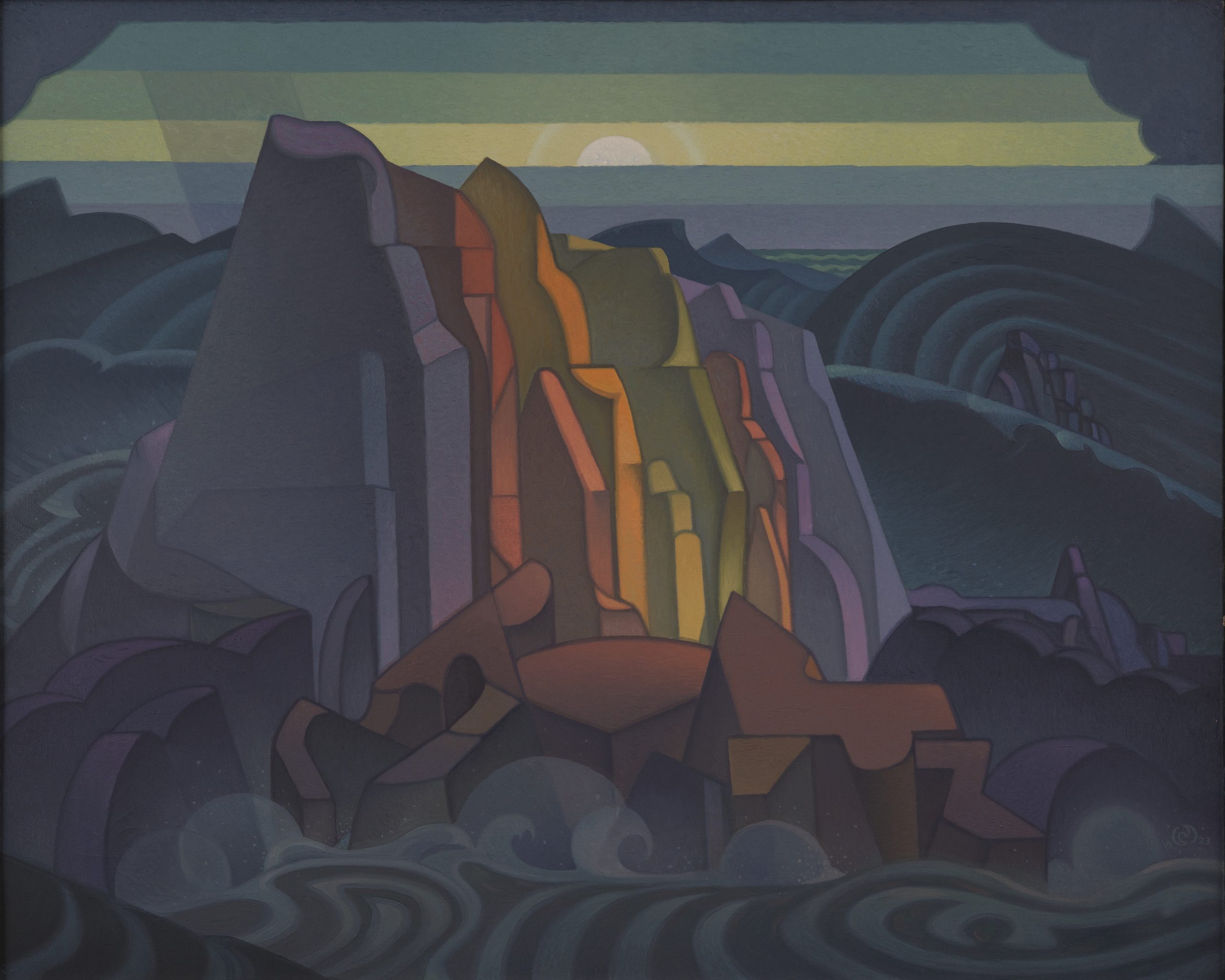
Raymond Jonson, Earth Rhythms No. 3, 1923, Oil on canvas, 82.221.0121.
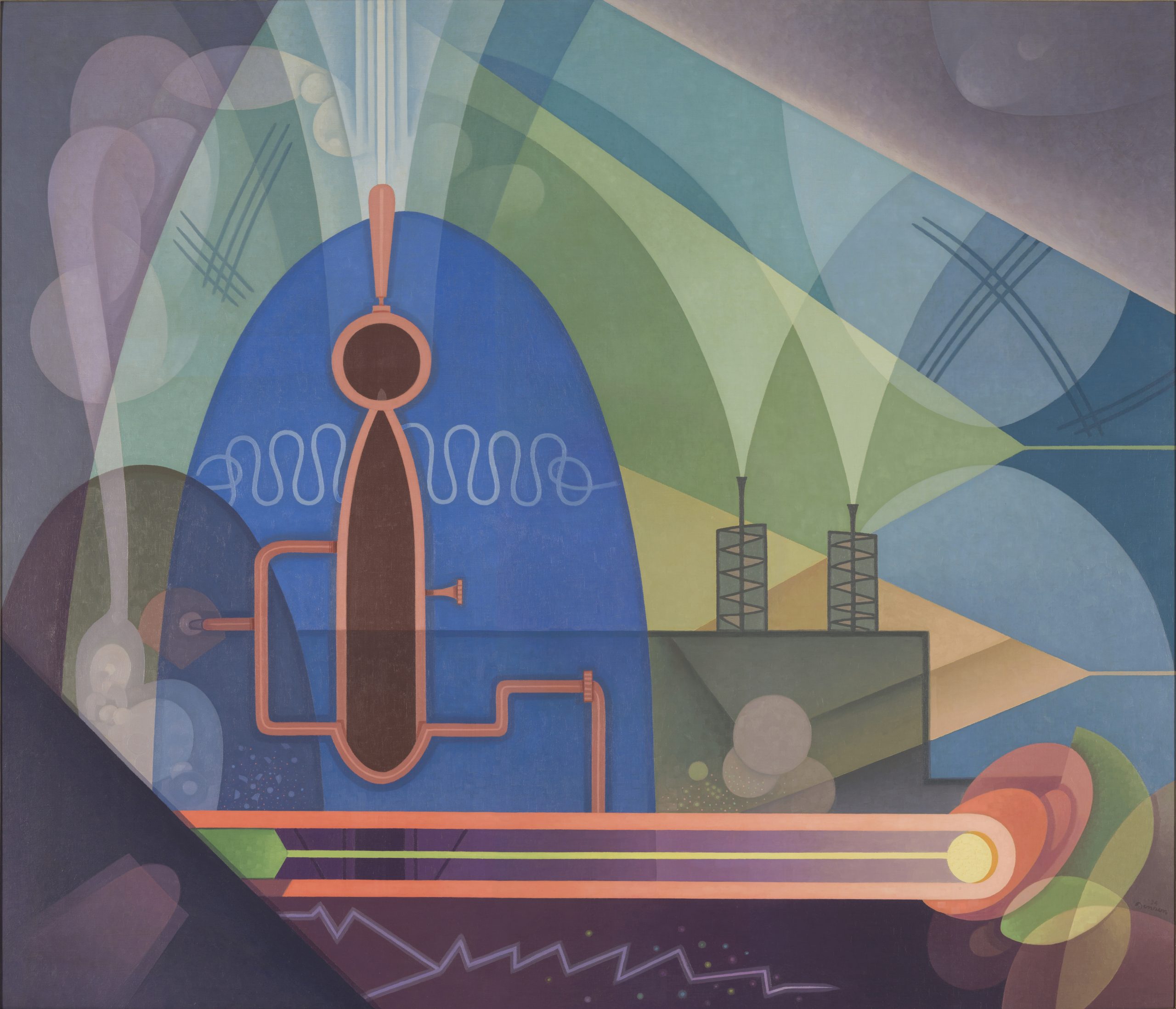
Engineering from the series The Cycles of Science, 1934, Oil on canvas, Acquired through the Works Progress Administration (WPA) of the Federal Government, 82.221.1908. 
Astronomy from the series The Cycles of Science, 1934, Oil on canvas, Acquired through the Works Progress Administration (WPA) of the Federal Government, 82.221.1907. 
Biology from the series The Cycles of Science, 1934, Oil on canvas, Acquired through the Works Progress Administration (WPA) of the Federal Government, 82.221.1906. 
Mathematics from the series The Cycles of Science, 1934, Oil on canvas, Acquired through the Works Progress Administration (WPA) of the Federal Government, 82.221.1905. 
Chemistry from the series The Cycles of Science, 1934, Oil on canvas, Acquired through the Works Progress Administration (WPA) of the Federal Government, 82.221.1910. 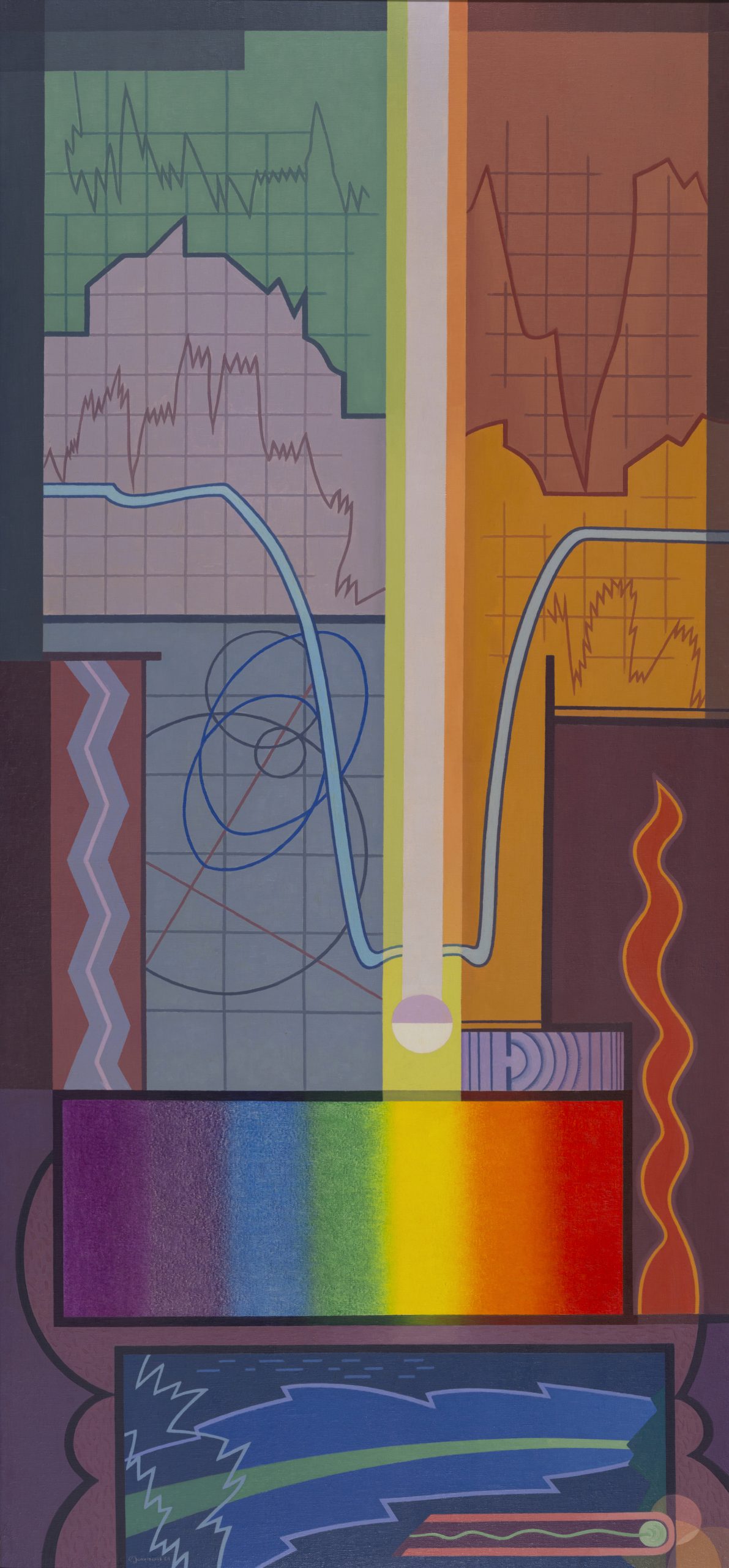
Physics from the series The Cycles of Science, 1934, Oil on canvas, Acquired through the Works Progress Administration (WPA) of the Federal Government, 82.221.1909. 
Time Cycle (Morning), 1930, Oil on canvas, 82.221.1899. 
Time Cycle (Noon), 1930, Oil on canvas, 82.221.1900. 
Time Cycle (Night), 1930, Oil on canvas, 82.221.1901. 
Equipoise from the Universe Series, 1935, Oil on Masonite, 82.221.0003. 
Summer from the Seasons Series, 1927, Oil on canvas, 82.221.0122. 
Variations on a Rhythm - T, 1933, Oil on canvas, 82.221.0123. 
Self Portrait, 1925, Oil on canvas, 82.221.0161. 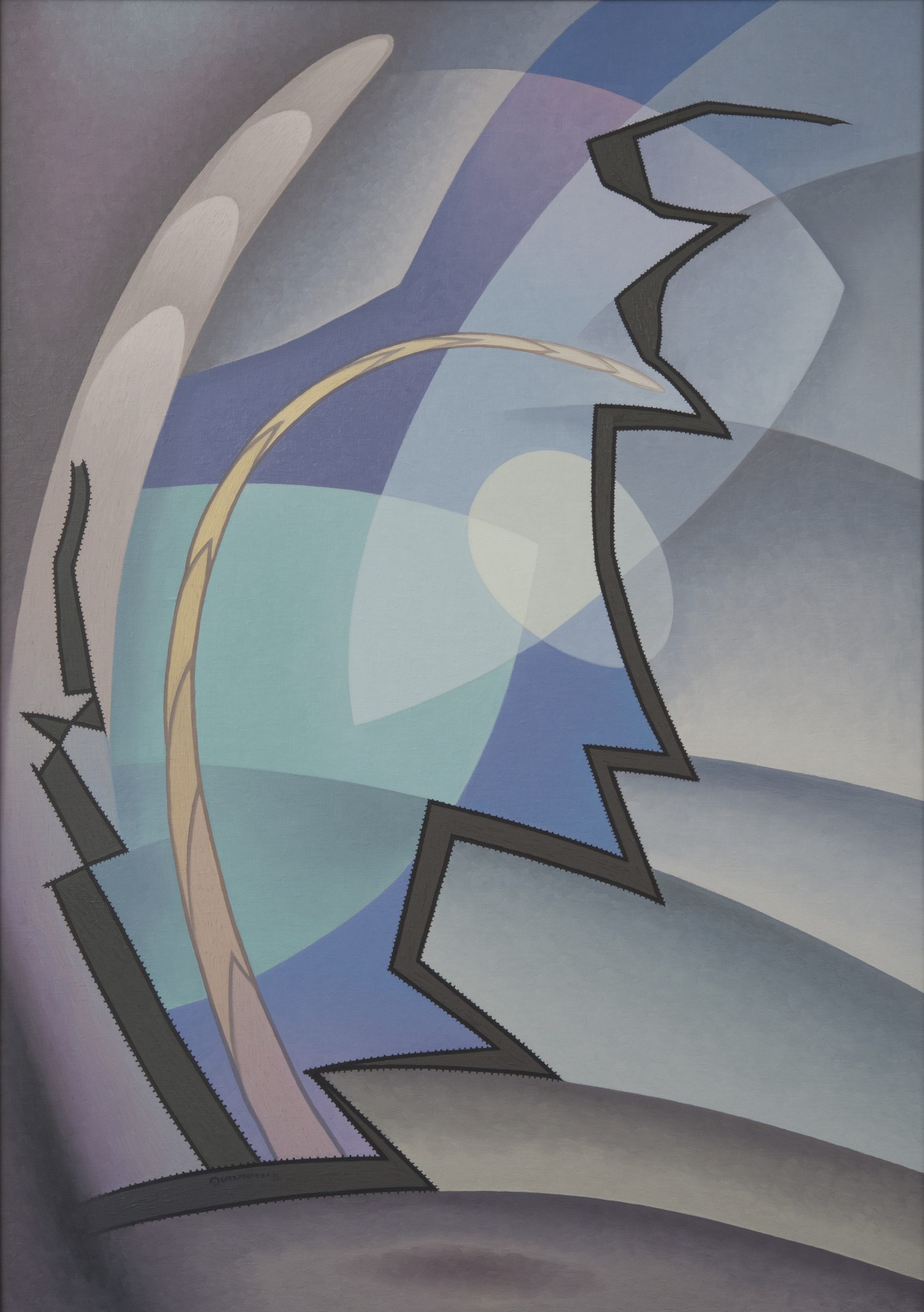
Cosmic Theme No. 1, 1936, Oil on canvas, 82.221.0155. 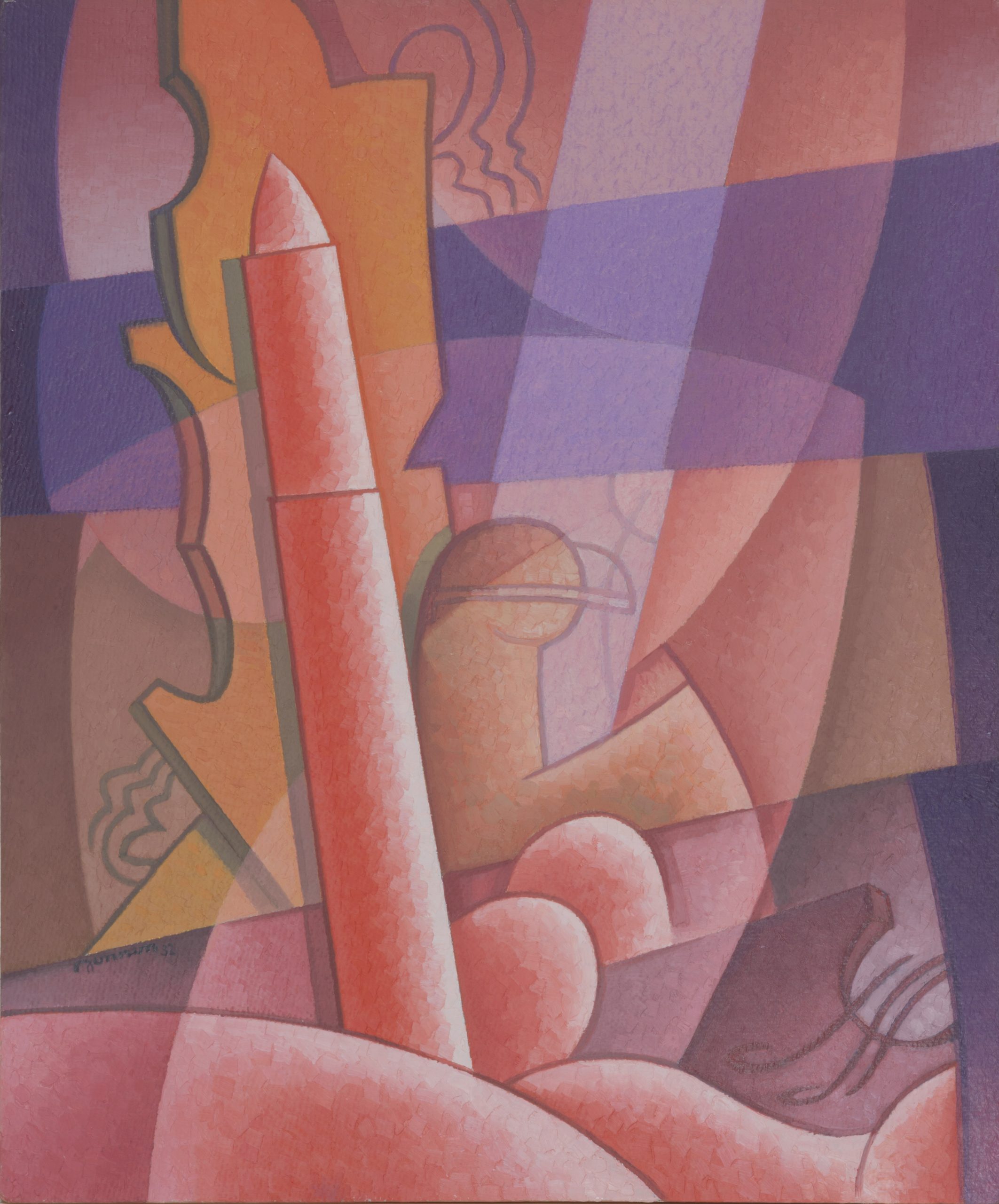
Abstraction in Red, 1932, Oil on Masonite, 82.221.0168. 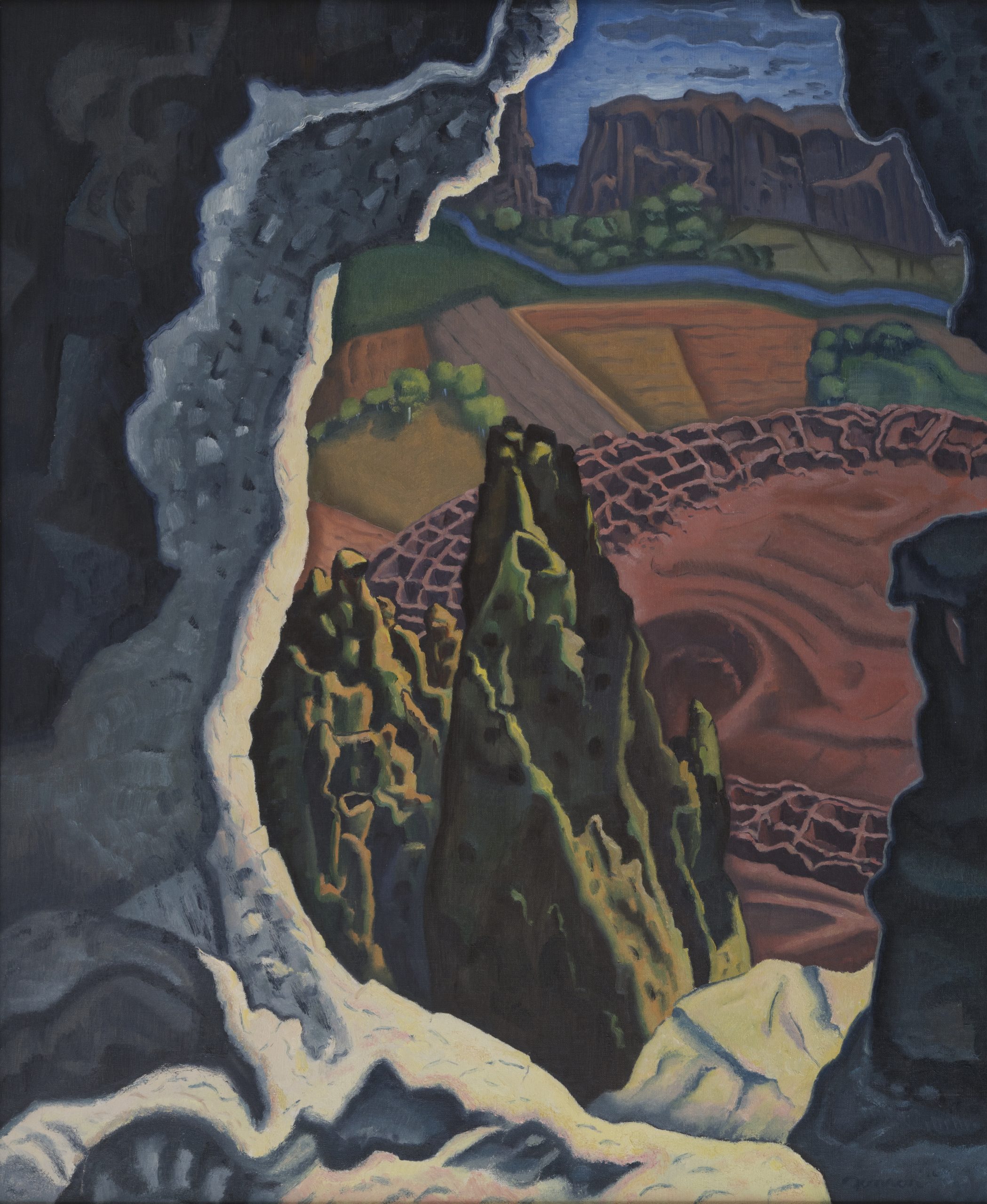
Cliff Dwellings No. 1, 1926, Oil on canvas, 82.221.0215. 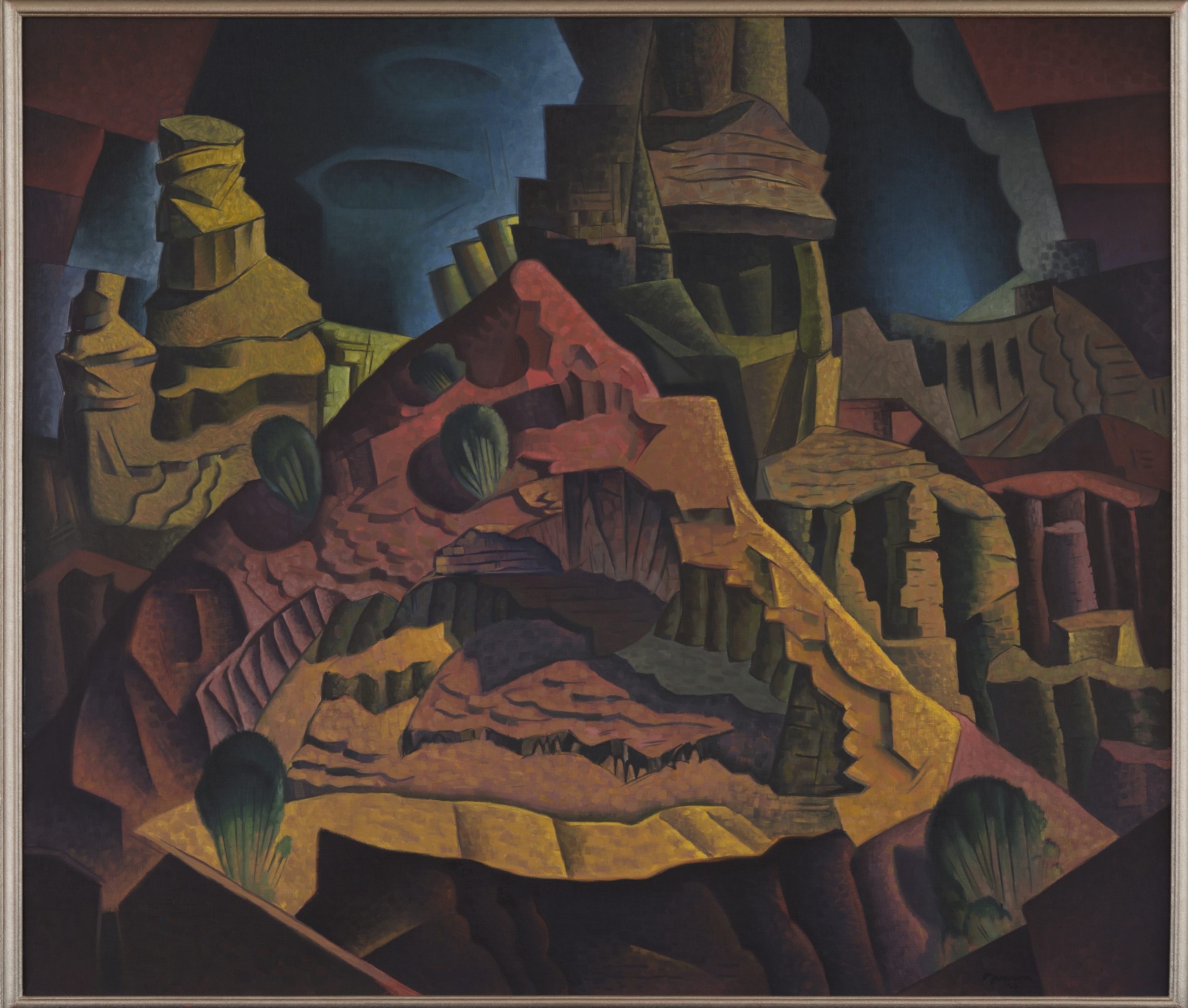
Earth Rhythms, 1926, Oil on canvas, 82.221.0218. 
Autumn from the Seasons Series, 1922, Oil on canvas, 82.221.0302. 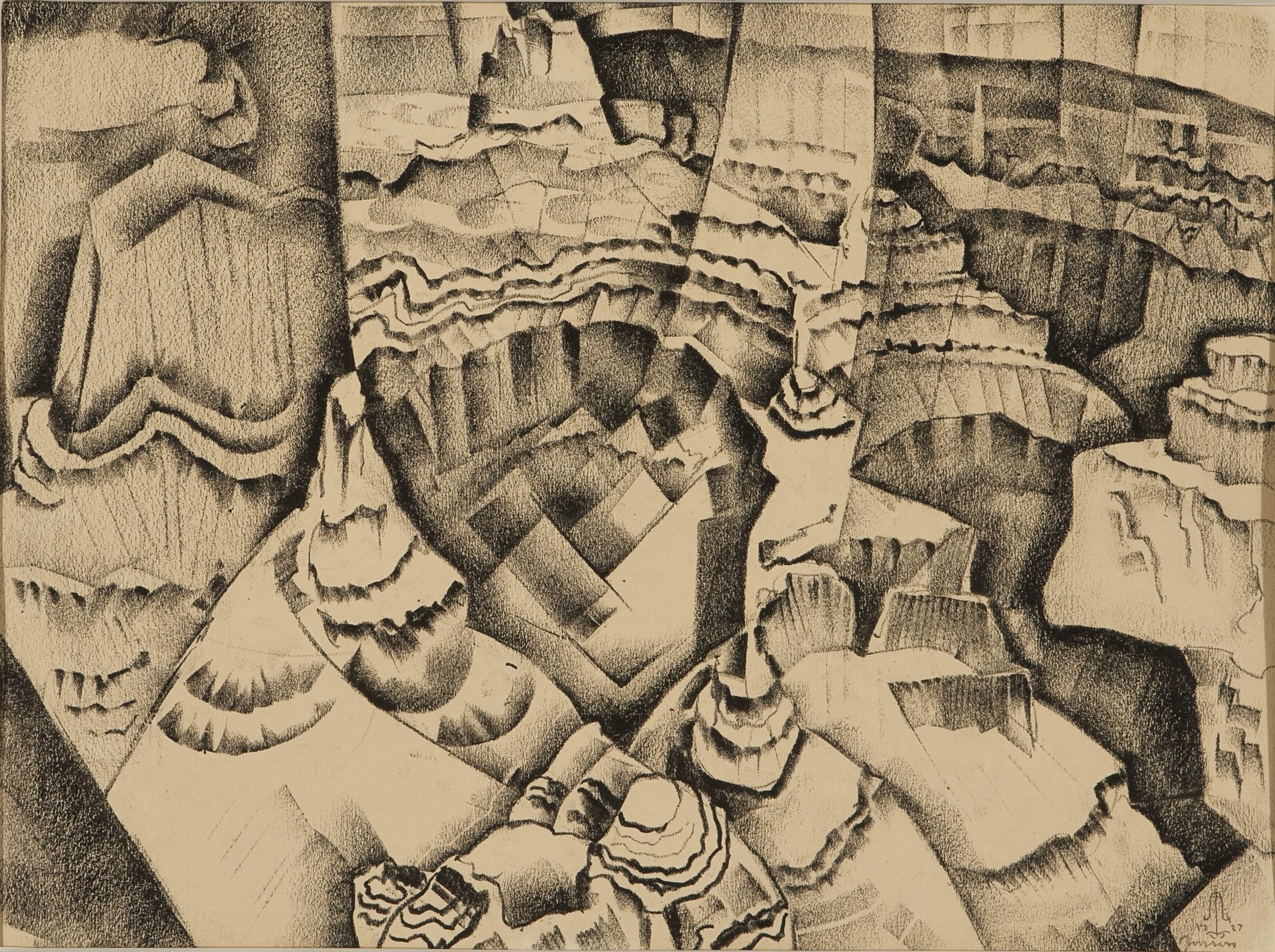
82.221.0333 
Grand Canyon Trilogy, First Movement, 1927, Oil on canvas, 82.221.0656. 
Grand Canyon Trilogy, Second Movement, 1927, Oil on canvas, 82.221.0668. 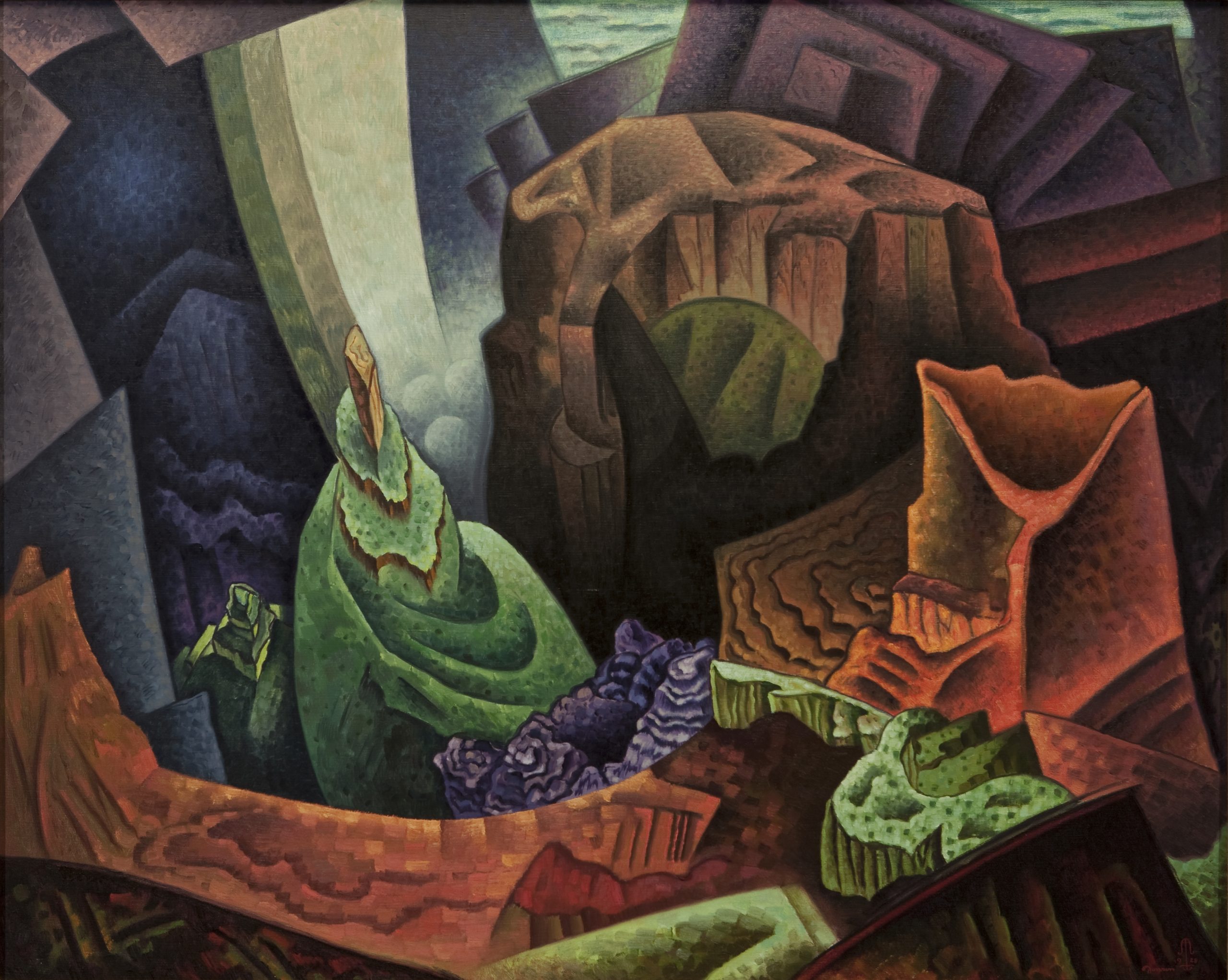
Grand Canyon Trilogy, Third Movement, 1927, Oil on canvas, 82.221.0658. 
Symphonic Portrait - May Van Dyke, 1929, Oil on canvas, 82.221.1892.


